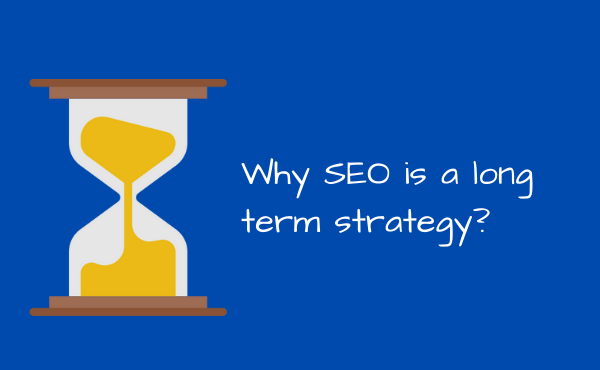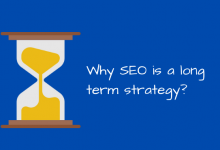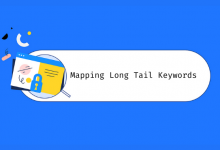Why SEO is a long term strategy?

If you want to get more leads and sales online, having an organic website presence is a must. The first Google search page gets about 89.8% of the clicks.
By ranking your website organically, you will not only have any CPC (cost-per-click) costs, but you will also have more potential website traffic in the long run.
If you start with a Google ad, you will immediately be able to start generating traffic and results. Search Engine Optimization (SEO), on the other hand, is a long-term strategy.
I will tell you exactly how long it takes to score with SEO in the article below. I used official Google guidelines and the latest research for this.
Finally, we will also give a few tips to get results faster.
Table of Content
How long will it take to get results with SEO in 2021?
After optimizing a website’s SEO, it takes about three to four months and sometimes a full year before you see clear results. This is how long it takes according to Google’s Maile Hoye after you hire an SEO agent or expert.
This seems like a long time, but it is in line with official guidelines on the subject.
In some cases with a strong domain name and a lot of low-hanging fruit that was not used before, you can see results faster.
But SEO is not a sprint but a marathon. You will only really see the real benefits in the long term
Why does it take so long to see the results of SEO?
The reason for this is that even with hard work, the process involves a lot of waiting.
Some factors for this are:
- Google should reindex and reconsider your Page Rank for all the pages you optimize.
- Creating high-quality content that matches the search intent of the Search Engine Result Pages (SERP) is time-consuming
- Google favors “proven” content with cues like backlinks or social media exposure proving it’s worth it.
- White-hat backlink and authority building takes time.
- Google-approved link building where you earn links by creating high-quality content takes a lot of time.
- Building authority and a brand also take time.
Conclusion: you can’t rush the process
Any SEO service that offers short-term link building is likely doing it by providing low-quality black-hat links from a private blog network. Even if you see short-term benefits, the risk of being penalized and completely banned from the rankings can be high.
But suppose your website or page is brand new? How long does it take to get into the top 10 results?
How long does it take for a new website to rank on google?
Ranking a new website on Google in the top 10 can take a long time, sometimes even several years if you don’t do everything right.
About 94% of First page results are older than one year. The average page in the first position is more than two years old.
5.7% of pages that do rank within a year reach the first page within two to six months.
While the trend varies a bit based on your DR (Domain Rating), even the low-rated domains tend to rank within two to six months.
Note: A high domain rating essentially means your domain has a lot of backlinks from relevant sites in its category. It’s a clear indicator of authority and trust on the internet.
If you want to try SEO yourself, the first step is learning the best SEO tricks and ranking factors. And the bad news is, that learning all about SEO is more time-consuming than waiting for results when working with experts.
How long does it take to learn SEO?
If you’re starting out as a rookie, it can take anywhere from four weeks to three months to even understand the basics of on-page SEO. Any professional skill ultimately just takes time to learn.
Some of the reasons it takes so long to learn SEO are:
- There is a lot of conflicting information online on the subject. Finding reliable sources can be difficult
- The feedback is very delayed. If you start experimenting on your website, it will take months before you know whether it worked or not.
- SEO trends and tactics are constantly changing and evolving. This can make it difficult to stay up to date.
- There is a large arsenal of complex tools that you must learn to use effectively.
The other bad news is that basic SEO is only useful for low-competition industries or for local businesses.
If you’re in a highly competitive market, you’ll need to master every advanced SEO tactic to get results.
How long does it take to become an SEO expert?
If you work for a professional company under someone with experience, it takes at least a year to become a real SEO specialist.
Creating the perfect SEO campaign for your website will probably take even longer. By now, hopefully, you’ve noticed that it’s highly unlikely that you’ll become an SEO expert within a few months.
But that does not mean that there are no tips to see faster results from SEO applications.
The 5 tips to see results faster with SEO
1. Use keyword research to find low hanging fruit
If you target the wrong keywords, you may not stand a chance of making it to the top results.
Example:
Keywords that you can see as “low hanging fruit” have three properties:
- An acceptable monthly volume (at least a few hundred searches)
- A certain level of commercial intent (such as a product category, name, location, etc.)
- little competition
You will no longer find keywords with zero competition in 2021, but there are always favorable keywords to be found.
2. Invest in a quality host with fast loading times and a professional design
If the website is not user-friendly, it doesn’t matter how good the keyword selection you have.
Page speed has become a ranking factor since 2018. The loading speed of your website also determines how long people stay on your website.
HTTPS has been an official classification signal since 2014 and Google Chrome and other browsers will label your website as insecure if it is still on HTTP.
Invest in a quality host that offers HTTPS, caching, and fast loading speeds.
Professional website design is another aspect that plays a vital role in the user experience of your website. Design and usability are also factored into the page experience ranking factor of Google’s algorithm.
3. Eliminate on-page errors such as duplicate content and broken links.
The first step to optimizing your SEO usually involves fixing your existing mistakes. Even if you think you’re doing everything right, there’s probably something you’ve missed.
A study of 175 million pages revealed more than 300 million SEO errors. That is an average of more than 1.71 numbers per page.
Some of the most common mistakes include too long meta titles, duplicate titles, and missing or too long descriptions.
Other common mistakes include:
- Duplicate content
- Hidden (unreadable) content
- Broken links
- Missing H1 tags
- Bad H2
4. Start building backlinks by improving content quality and building relationships in your industry
It’s no secret that backlinks are the key to organic search results. On the face of it, it’s a factor that hasn’t changed much in the last decade.
When more unique domains link to your page, it means higher rankings and more search traffic.
But Google is now also looking at the quality and relevance of your links.
One of the best white-hat tactics for building relevant, high-quality links is to network and build relationships with people in your industry.
You can do this by identifying the best bloggers and influencers by exploring competitors for your targeted keywords. Then there is also the art of bonding through social media. Linkedin and Instagram are a good basis for this.
Of course, they won’t share uninteresting, low-quality content with lots of keywords just because they know you.
You also have to work hard to improve your content.
This can be done by:
- Stay on topic.
- Developing your voice.
- Using visuals and charts to show, not tell.
- Share unique research or case studies where possible.
- Read and learn from the best blogs in your industry, but never copy or plagiarize.
Together, these things help your organic social media presence and lead to natural inbound links.
Then, if you try a tactic like contacting blogs that link to an outdated resource, they’ll likely reward you with a link as well.
5. For faster and better results, it is better to leave it to the experts.
If you’re brand new to SEO, your head is probably spinning from the first four tips.
Keep in mind this is just basic SEO
As a business owner, one of the keys to success is knowing when to delegate and outsource. If you want fast, powerful results from SEO, you’re probably better off leaving it to the experts.
Hiring a professional SEO agency could be your best bet, relying on their experience and knowledge to catapult your page to the top of Google’s search results.
CONCLUSION
If you try to enter the world of SEO on your own, you can forget that it will pay off in a few months.
With a DIY approach, you also need to learn advanced techniques and tricks before you can even wait for results.
In the best-case scenario, you will see some improvements within six months to a year. In the worst-case scenario, you may fail to make any real improvements, no matter how much time you invest.
If you don’t have the time to fail or wait an extra year to see results, you’d better invest in a professional SEO service.









